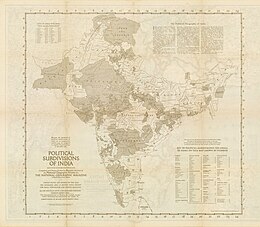State of Patiala | |||||||||||||||||||
|---|---|---|---|---|---|---|---|---|---|---|---|---|---|---|---|---|---|---|---|
| 1763–1947 | |||||||||||||||||||
| Capital | Patiala | ||||||||||||||||||
| Common languages | Punjabi (official) | ||||||||||||||||||
| Religion | Sikh | ||||||||||||||||||
| Government | Absolute monarchy | ||||||||||||||||||
| Maharaja | |||||||||||||||||||
• 1707 - 1765 | Ala Singh | ||||||||||||||||||
• 1938 - 1947 | Yadavindra Singh | ||||||||||||||||||
| History | |||||||||||||||||||
• Established | 1763 | ||||||||||||||||||
• Disestablished | 1947 | ||||||||||||||||||
| Area | |||||||||||||||||||
• Total | 15,389 km2 (5,942 sq mi) | ||||||||||||||||||
| Population | |||||||||||||||||||
• 1881[1] | 1,467,433 | ||||||||||||||||||
• 1891[1] | 1,583,521 | ||||||||||||||||||
• 1901[1] | 1,596,692 | ||||||||||||||||||
| Currency | Rupee And Paisa | ||||||||||||||||||
| |||||||||||||||||||
| Today part of | India Pakistan | ||||||||||||||||||
Patiala State was a self-governing princely state in British India, and one of the Phulkian States, that acceded to the Union of India upon Indian independence and partition in 1947. The state was founded by Sidhu Jat Sikhs. Patiala State was the largest and most important princely state in the Punjab Province.[2] The state's ruler, the Maharaja of Patiala, was entitled to a 17-gun salute and held precedence over all other princes in the Punjab Province during the British Raj.[3]












